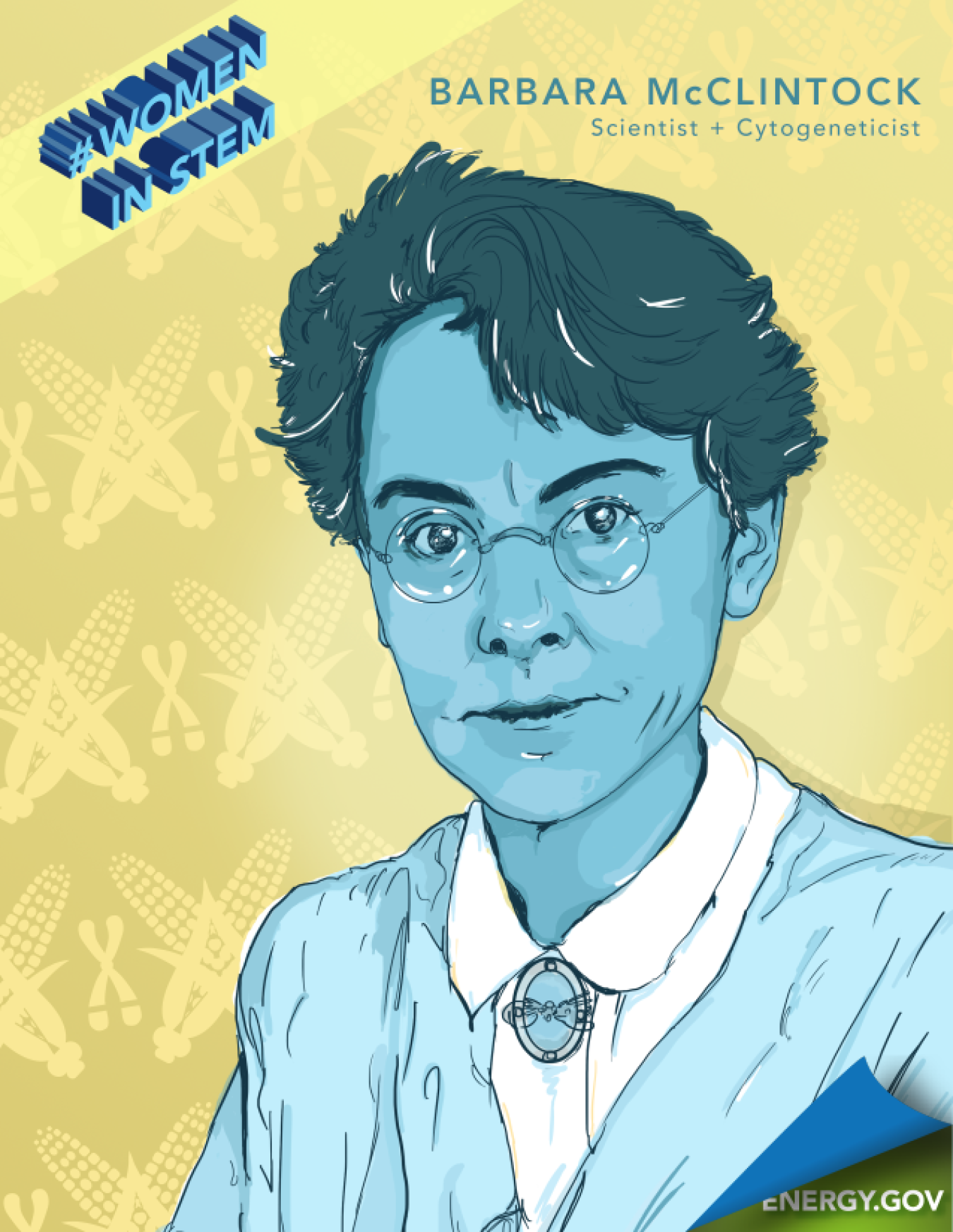
Barbara McClintock was a pioneer in the field of cytogenetics and became the first woman to win a solo Nobel Prize in Physiology or Medicine. Graphic by <a href="/node/2349957">Cort Kreer</a>.
It’s Women’s History Month on Energy.gov. During the month of March, we’re highlighting the great contributions to science, technology, engineering and mathematics or STEM fields made by women throughout history, as well as taking a look at fascinating work that women are doing in STEM fields today.
When it comes to cytogenetics, the field of genetics studying the structure and function of cells, Barbara McClintock was a true pioneer. At the age of 81 in 1983, she became the first woman to win a solo Nobel Prize in Physiology or Medicine for discovering genetic transposition, when genes change positions on chromosomes. She used the concept to explain how genes can cause certain physical characteristics to be turned on or off. For example, this is why kernels on the same piece of corn may have different colors.
Here are a few more interesting tidbits you may not know about Barbara McClintock:
When Barbara McClintock went to Cornell University, women weren’t allowed to major in genetics. Instead, McClintock earned her bachelor’s and master’s degrees in botany and joined an elite group of researchers who studied the properties of corn at the cellular level.
In 1933, McClintock received a fellowship to work with famous German geneticist Curt Stern in Berlin. However, Stern, like many other Jewish scientists, fled Germany amid the rise of Adolph Hitler and anti-semitism. Despite Stern’s absence, McClintock still went to Berlin but ended up relocating to the Botanical Institute in Freiburg at the suggestion of Kaiser Wilhelm Institute director Richard Goldschmidt. McClintock’s work was cut short, though, as she moved back to the United States in 1934 due to the political turmoil in Germany.
She studied corn for 26 years. McClintock was a researcher at the Carnegie Institution of Washington's Department of Genetics at Cold Spring Harbor on Long Island, New York, for 26 years, receiving a Distinguished Service Award upon her retirement in 1967. During her time there, she received funding from the National Science Foundation and the Rockefeller Foundation to gather data on different types of corn in Central and South America, culminating in a study two decades in the making. She remained affiliated with the Cold Spring Harbor Laboratory until she died in 1992.
McClintock is considered to be among the most distinguished scientists of the last century. She was elected to the National Academy of Sciences in 1944. She was one of only two other women to have received this honor at the time. In 1945, she became first woman to be elected president of the Genetics Society of America. In 1981, she became one of the first scientists to receive the MacArthur Foundation Grant, commonly known as the "Genius Grant.”
One of the biggest honors of McClintock’s life came in 1971, when President Richard Nixon awarded her the National Medal of Science. During the ceremony Nixon said: "I have read [explanations of your scientific work] and I want you to know that I do not understand them.” He added: “But I want you to know, too, that because I do not understand them, I realize how enormously important their contributions are to this nation. That, to me, is the nature of science.”
